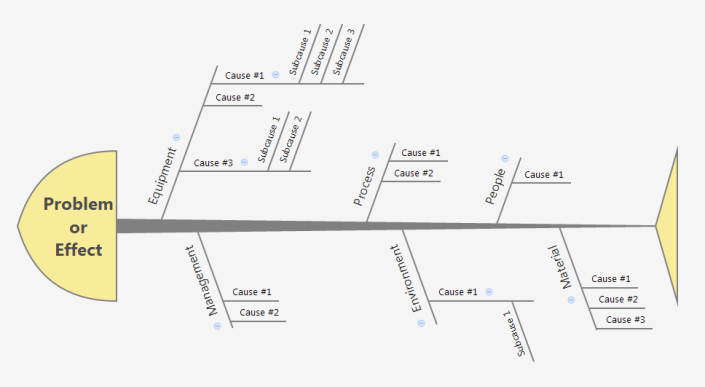
This is because the diagram makes it easy to consider all the possible causes of an issue within each category.įor instance, the 4S's diagram suggests that the possible causes could be related to suppliers, systems, surroundings, or skills. Organizations often use Ishikawa diagrams to troubleshoot processes and resolve problems within a system.
This helps teams to determine which resources will be required at specific times and can also help to identify potential quality control issues. Ishikawa diagrams are often used in product development to outline the steps involved in the process clearly. Some popular use cases for Ishikawa diagrams include: Product development For instance, a team can use an Ishikawa diagram to identify bottlenecks or weaknesses within a business proposal and make the required adjustments. Ishikawa diagrams are a useful way to clearly visualize the potential causes of a specific event or problem.

For instance, it could be used in a food processing plant to determine why product quality has declined. It is most commonly used in the manufacturing industry. The 3M diagram, also known as the 'man, machine, material' fishbone, organizes information into three categories: manpower, machinery, and materials.
ISHIKAWA ROOT CAUSE ANALYSIS SOFTWARE
For instance, a software company will have very different affinities to a pet food manufacturer. This is useful for organizations that want to create and set their own unique affinities. Simple fishboneĪ simple fishbone diagram has no predetermined causes or categories of causes. For instance, a restaurant could use it to determine why the number of customers has declined over the past year. It is most commonly used in the service industry. The 4S diagram organizes information into four categories: suppliers, systems, surroundings, and skills. For instance, it could be used to improve the efficiency of a housekeeping business. The 8P diagram organizes information into eight categories: procedures, policies, place, product, people, processes, price, and promotion. For instance, it could be used to identify bottlenecks slowing down the manufacturing process in a candle business. The 6M diagram organizes information into six categories: man, machine, material, method, mother nature, and measurement.

The different types of Ishikawa diagrams include: The 6Ms Ishikawa diagram Smaller branches can then be added to these affinities to add specific causes during brainstorming sessions. A line, known as the 'spine,' is drawn to the left, and other branches, which are types of causes known as 'affinities,' shoot off above and below it. They are also referred to as Fishikawa, herringbone diagrams, or cause and effect diagrams.Īn Ishikawa diagram places the central problem, known as the 'effect,' on the far right of the diagram. Because of this structure, Ishikawa diagrams are sometimes referred to as fishbone diagrams. The ribs represent the causes of an event, and the skeleton's head indicates the outcome. Visually, the diagram's structure resembles the skeleton of a fish. The diagram is named after its creator, Kaoru Ishikawa. It is commonly used in product development to brainstorm and outline the different steps within a given process, allocate resources, and determine whether quality control issues are likely to arise. An Ishikawa diagram is designed to show the potential causes of a specific event or process.


 0 kommentar(er)
0 kommentar(er)
